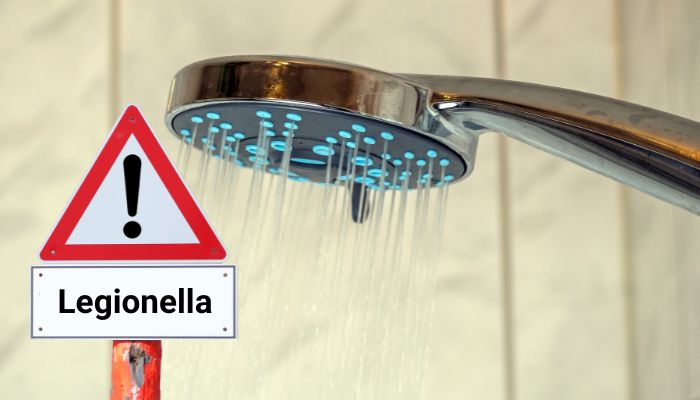
In the UK, landlords have a legal responsibility to ensure the health and safety of tenants by keeping their properties safe and free from health hazards. This responsibility extends to the management and prevention of Legionella in properties.
What Is Legionella?
Legionella is a rod-shaped bacterium that occurs naturally in soil and water environments. There are over 50 species of the bacteria that have been identified, although only 25 are linked to disease in humans, with Legionella pneumophila being the most dangerous – it’s responsible for over 90% of all cases of disease. Legionella can cause diseases such as Legionnaires’ disease – a potentially fatal form of pneumonia – and the milder Pontiac Fever.
Humans can catch Legionnaires’ disease through the inhalation of small droplets of Legionella contaminated water. All man-made hot and cold water systems are likely to provide an environment where Legionella can grow. At low temperatures below 20°C, the bacteria can survive but does not grow. In certain conditions, the bacteria can thrive and multiply, increasing the risk of exposure. Such conditions include:
- Water systems with a suitable growth temperature range.
- Systems that produce and disperse water droplets.
- Cases where water is stored and recirculated heavily.
- Systems with ample amounts of rust, sludge, scale, and biofilm for the bacteria to feed off.
What Must Landlords Do to Minimise the Risk of Legionella?
Landlords of both commercial and residential properties are legally obligated to minimise Legionella risks for their tenants. In practice, this does not require an in-depth, detailed risk assessment. The risks from hot and cold water systems in most residential properties are generally considered to be low owing to regular water usage and turnover. Therefore, residential landlords can rely on implementing simple, proportionate, and appropriate control measures to ensure the risk remains low.
Landlords should conduct a basic Legionella risk assessment to identify and assess any potential risks. This assessment should also be used to identify simple control measures to minimise the risk of exposure, including:
- Flushing out the system prior to letting the property.
- Avoiding debris getting into the system (e.g. ensure the cold water tanks, where fitted, have a tight fitting lid).
- Setting control parameters (e.g. setting the temperature of the hot water cylinder (calorifier) to ensure water is stored at 60°C).
- Making sure any redundant pipework identified is removed.
The risk is further lowered where instantaneous water heaters (for example combi boilers and electric showers) are installed because there is no water storage.
In practice, landlords can conduct a basic risk assessment which shows that there are no risks present and that no further actions are required. However, it is worth noting that landlords are responsible for regularly reviewing the risk assessment in case anything changes in the water system or the property. The risk assessment might be reviewed every two years for example.
Legionella Guidance for Tenants in Rental Properties
The burden of preventing Legionella does not fall on landlords alone. Tenants are also responsible for ensuring that any control measures put in place are maintained and effectively conducted. For example, tenants may be advised to:
- Not adjust the temperature setting of the calorifier.
- Regularly clean and disinfect shower heads (which can be a potential transmission risk due to the dispersal of water droplets whilst using).
- Be aware of the risk of stagnant water if they leave the property for a prolonged time.
Minimising the Risk of Legionella in Vacant/Void Properties
The risk of Legionella multiplying in a system is relatively low in domestic properties due to the regular usage of water refreshing the system and preventing stagnation. However, vacancy periods between properties can enhance the risk of Legionella occurring. To prevent this, outlets on hot and cold water systems should be used at least once a week to maintain a degree of water flow and minimise the chances of stagnation. To manage the risks during non-occupancy, consideration should be given to implementing a suitable flushing regime or other measures such as draining the system if it is to remain vacant for long periods.
Who Should Carry Out a Legionella Risk Assessment?
There is no legal requirement that Legionella risk assessments must be carried out by an accredited person. Most landlords can undertake the risk assessment themselves, without the need to be professionally trained or accredited. However, for any landlords who do not feel competent or lack the time to do so, a risk assessment can be conducted on their behalf.
Although landlords are not required to keep a record of the Legionella assessment, it is good practice to do so.



